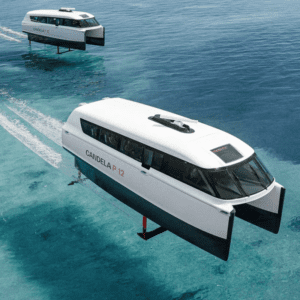For years, hotel operators and developers have collaborated with luxury fashion houses to combine the best of five-star hospitality with flashes of designer fashion. When the Versace Hotel opened in 2001 on Australia’s Gold Coast, it was billed as ‘the world’s first fully fashion-brand hotel’. Everything from the soap to the swimming pool carried the Versace stamp and it signalled the start of a travel trend: fashion conscious globetrotters paid a premium to immerse themselves in the world and wardrobes of the catwalk’s greatest visionaries.
Bulgari, Armani, Missoni and Louis Vuitton followed suit. Their exclusive properties serve as 24-hour shop windows with everything from the furniture to the fine dining carrying their ubiquitous logos.
“Hotels that bear the name of top-of-the-line fashion houses such as Armani or Bulgari are normally priced at the top end of the luxury hotel segment. ,” said Tasos Kousloglou, Senior Vice President of JLL’s Hotels and Hospitality Group. “The thinking behind it is that this type of lifestyle product can command a premium price and weather financial crisis. However, the ultimate success of such ventures long-term has yet to be proven.”
For fashion designers it’s a profitable partnership. “It’s like when designers branch out into watches or fragrances; it’s expanding their reach and it’s about brand awareness, diversification and an additional income stream hey ultimately benefit,” he adds.
“For developers, a designer collaboration requires substantial investment when every fixture and fitting of the hotel is branded. Their experimental nature often creates design, maintenance and operational challenges” says Kousloglou. And this may result in high capital, labour and fees that hinder profitability.
“Hotel developers and operators are finding it harder to differentiate themselves and such a financial commitment needs a return.”
Designed to be different
The international tourism market is more competitive than ever: 517 million international tourists landed in destinations worldwide between January and June 2014, 22 million more than the same period of 2013. Growth was strongest in the Americas, followed by Asia Pacific and Europe.
The hotel industry has been racing to keep up with the demand, introducing a range of new brands to bolster travellers’ choice.
“With such massive supply, differentiation becomes key,” says Mike Walsh, Managing Director, Hospitality, Healthcare and Education services, JLL. “Getting the right product is crucial.”
“It used to be all about the star rating, three, four, five, but that’s not widely used anymore, particularly in China. Now it’s segmented by budget – economy, mid-scale and luxury.”
New trends
The increasing number of upscale and boutique brands competing for market share must balance the cost-efficiency of their collaborations in the face of rising competition.
Rather than a full-branded partnership, American designer Oscar de la Renta, for example, teamed up with The Peninsula Hotel group to create bathroom amenities, including a bespoke fragrance. Diane Von Furstenberg, Karl Lagerfeld and Vivienne Tam have also put their names to carefully selected corners of the hotel market, ranging from a single suite to artwork.
Hotel restaurants are receiving a makeover, too.
“One new trend is in food and beverage,” says Walsh. But he isn’t referring to celebrity chefs. “It’s all about the interior. Hotels are insisting on a specific brand of designer to retain a certain look in their flagship restaurants.”
“What we are seeing is the lifestyle brand branch out – from fashion to more design-lead collaborations.”
Even developers are taking lessons from designers at the planning stage. Renowned architect Zaha Hadid has put her name to showpiece properties in Macau and Dubai.
Asian appetite
While the full designer-hotel collaboration found its footing in the fashion capitals – Paris, London, New York – a new wave of designer hotels are opening up in Asia.
Bulgari Spa is scheduled to open in Shanghai in 2015 and the Chanel designer Karl Lagerfeld Hotel will open in Macau in 2017.
This is being driven, in part, by Asia’s unrelenting thirst for luxury. But it takes more than the brand name alone to curry favour with the region’s cash-rich millennials.
Access to enormous amounts of data has allowed hotel operators to tailor products and services to individuals. In Asia, this is crucial. According to Intercontinental Hotels Group (IHG), 62 per cent of Chinese travellers believe that personalisation makes them feel respected. This is the raison d’être behind many boutique brands.
“This principle of respect underpins our HUALUXE Hotels & Resorts brand, which takes the best aspects of renowned Chinese hospitality and applies IHG’s international scale and insights into the Chinese market,” says Richard Solomons, CEO, InterContinental Hotels Group. Starwood, Hilton and Marriott have also opened China-specific brands to support the demand from China’s increasingly global tourists.
As Asia’s spending power increases and the region’s young, middle class travellers expand their travel footprint, the hotel industry will continue to adapt.
“The changing attitudes of millennials will drive the trend for personalisation and there’s certainly a proliferation of these brands in Asia,” adds Walsh.
Haute couture may have dictated design ten years ago and fashion followers will continue to seek out designer dreams. But a new trend is transforming the hospitality industry and one thing is certain: it’s personal.
About the source
JLL is a professional services and investment management firm offering specialized real estate services to clients seeking increased value by owning, occupying and investing in real estate.













